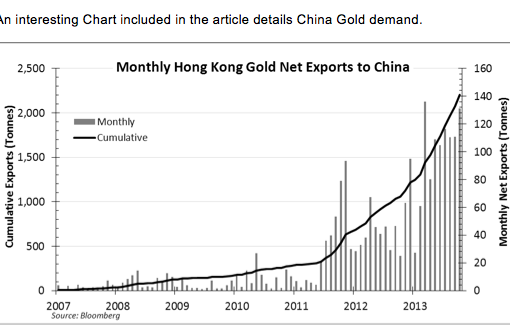I’m proud to say that last December, I predicted that Steve Ballmer would step down as Microsoft (MSFT) CEO in 2013. Although I believed strongly in Ballmer’s fate, I didn’t make any investment decisions based on that insight; Microsoft has been dead money for over a decade and few new CEOs would be able to change that. (I also predicted that Groupon (GRPN) would soon declare bankruptcy; that hasn’t happened yet.)
Not that there aren’t tech company CEOs capable of making a difference. There are. But as Yahoo’s (YHOO) fall and (modest) rise has shown, it takes almost biblical levels of upheaval to get the wrong person out and the right person in. I’ll save a discussion of Steve Jobs, the ultimate difference-maker, for another day.
When I mentioned that Microsoft was “dead money,” I was referring to its stock price, not its revenue or earnings during Ballmer’s tenure. Ballmer became CEO in January 2000. And the conventional wisdom in 2013 is that he single-handedly drove the company from its position as technology kingpin to its current status as also-run giant, missing out again and again on mobile and social and cloud mega-trends.
But while there is some truth in this perception, Microsoft is hardly Novell or 3Com or Wang Computer. In the 13 years from fiscal 2000 through fiscal 2013 (ending this past June 30), Microsoft’s revenue increased 239%. Its net income per share increased 203%. Pretty good stuff when you consider that the NASDAQ Composite Index fell 14% over the same period.
Ahh, but what about Microsoft’s stock price? It fell about 13% during that 13 year stretch. (I’ll discuss Microsoft’s dividends in a moment.)
Why did Microsoft stock fall while its economic output rose? The answer it seems is multiple compression.
On June 30, 2000, Microsoft stock had a trailing price/earnings multiple of 47.1. Exactly 13 years to the day later, its multiple was 13.4. Multiple. Compression.
Multiple compression is one of those $10 phrases bandied about by Wall Street analysts. Also known as “valuation compression,” multiple compression is a fancy term used to describe a simple process: the price of something is getting (or has recently gotten) cheaper, while the “intrinsic value” of the item is, according to the person doing the talking, unchanged.
Almost always, the person doing the talking is a sell-side Wall Street analyst trying unsuccessfully to explain why a value stock that he or she previously recommended has become, well, even more of a value by declining even further in price.
This is known in the trade as a “value trap,” where the declining price of a stock isn’t interpreted as a sign of product failure or operational bungling, but rather perversely makes the company more appealing because its stock is even cheaper than it was before! Buy! Buy! Buy!
Now with respect to Microsoft, multiple compression ought to have helped Microsoft stock, because there is research that suggests it’s a harbinger of future stock out-performance. But there are two reasons for the relentless compression that took place while Steve Ballmer was CEO.
The first reason is that a price:earnings multiple of 47 is about 3x the historical market average for P/E ratios, while Microsoft’s current multiple is essentially market-correct. In statistical terms, Microsoft’s P:E ratio reverted to the mean.
And the second reason is that while Microsoft’s revenue and earnings grew substantially during Mr. Ballmer’s reign. That growth steadily decelerated and never really surprised investors, the way they’d been surprised from 1988 through the year 2000. Or the way Apple (AAPL) kept surprising investors from 2002 until 2012. Or the way Priceline (PCLN) and now LinkedIn (LNKD) are doing so.
It’s worth mentioning that during Ballmer’s CEO tenure, Microsoft initiated a dividend and has paid out nearly over $10/share in cumulative dividends since 2004. While that is realized cash (and not the implied increase brought by stock-buybacks) the “meta” of a dividend for a tech company is, ‘growth is over and it’s time to distribute the cash.’ That’s typically not a message that drives a stock’s P/E ratio higher.
It’s hard to infer too much from Ballmer’s time at Microsoft’s helm. As an early employee made fabulously wealthy by Microsoft stock, he’s hardly representative of the kind of professional CEO brought in to succeed a protean founder like Bill Gates. But with no heir apparent already waiting in the wings, the board will now have to search for just that kind of person.
The new CEO will inherit a major set of problems at Microsoft, but at least a stratospheric valuation won’t be one of them.
Mid-August has already brought with it our quarterly re-balancing and we’ll provide the details in our next manager letter. Interestingly, our mid-August quantitative screen yielded 126 candidates – an unusually large number. In the 13 years we’ve been running this screen, getting such a high “pass rate” usually occurs shortly after a market bottom. Yet, here we are close to a top.
It’s a mystery, but not one we need to solve because we don’t engage in market timing. We stick to our tried-and-true numbers-driven process.
Photo: D. Begley
The investments discussed are held in client accounts as of August 31, 2013. These investments may or may not be currently held in client accounts. The reader should not assume that any investments identified were or will be profitable or that any investment recommendations or investment decisions we make in the future will be profitable.





